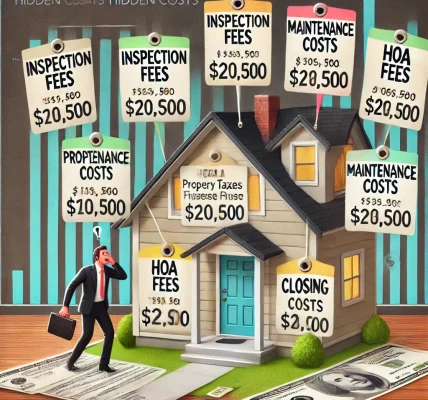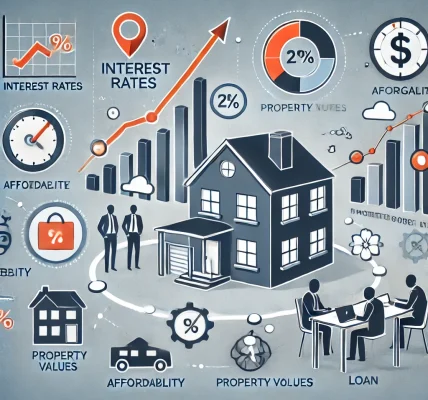Introduction
Real estate investment offers multiple ways to generate wealth, but two of the most popular strategies are flipping houses and rental properties. Each method has its own benefits and challenges, and the right choice depends on your financial goals, risk tolerance, and investment strategy.
This guide will help you understand the differences between flipping houses and rental properties, their advantages and disadvantages, and which strategy is best suited for you.
1. Understanding Flipping Houses and Rental Properties
What Is House Flipping?
House flipping involves purchasing a property, renovating it, and selling it for a profit within a short period of time. Investors aim to buy undervalued properties, improve them, and sell at a higher price.
Key Aspects of House Flipping:
- Finding distressed properties at a discount
- Renovating and increasing the property’s value
- Selling quickly to maximize profits
What Are Rental Properties?
Rental properties involve buying real estate and renting it out to tenants for consistent income. Investors earn money through monthly rental income and long-term property appreciation.
Key Aspects of Rental Properties:
- Generating passive income through rent
- Long-term wealth building through property appreciation
- Managing tenants and property maintenance
2. Pros and Cons of House Flipping
Pros of Flipping Houses
✅ Quick Profits – Investors can earn substantial profits in a short time if they buy and sell wisely.
✅ No Long-Term Commitment – You don’t have to manage tenants or maintain properties for years.
✅ Exciting and Hands-On – Ideal for those who enjoy renovation projects and active involvement.
✅ Market Flexibility – Investors can take advantage of market fluctuations to buy low and sell high.
Cons of Flipping Houses
❌ High Initial Investment – Requires significant capital for purchase and renovation costs.
❌ Market Dependency – Profits depend on market conditions, and downturns can reduce property value.
❌ Time-Intensive – Finding, renovating, and selling properties requires significant time and effort.
❌ Potential for Losses – Unexpected renovation costs or market downturns can cut into profits.
3. Pros and Cons of Rental Properties
Pros of Rental Properties
✅ Steady Passive Income – Monthly rental payments provide a reliable income stream.
✅ Long-Term Wealth Building – Property values typically appreciate over time, increasing net worth.
✅ Tax Benefits – Rental property owners can deduct mortgage interest, depreciation, and maintenance costs.
✅ Hedge Against Inflation – Rental income can increase with inflation, maintaining the property’s value.
Cons of Rental Properties
❌ Active Management Required – Landlords must deal with tenants, repairs, and maintenance.
❌ Vacancy Risks – Periods without tenants can lead to income loss.
❌ Property Depreciation and Maintenance Costs – Ongoing expenses can impact profitability.
❌ Illiquidity – Selling a rental property can take time and is subject to market conditions.
4. Key Differences Between Flipping Houses and Rental Properties
| Factor | Flipping Houses | Rental Properties |
|---|---|---|
| Investment Timeframe | Short-term (months) | Long-term (years) |
| Income Type | One-time profit per sale | Monthly rental income + appreciation |
| Risk Level | High (market fluctuations) | Moderate (market stability) |
| Active Management | High (renovations, sales) | Moderate (tenant management) |
| Capital Required | High (purchase + renovation) | High (purchase + maintenance) |
| Tax Benefits | Limited | Extensive (deductions, depreciation) |
5. Choosing the Right Investment Strategy
When to Choose House Flipping
- You have experience in real estate, construction, or renovations.
- You want quick returns and can manage short-term market risks.
- You have enough capital for property purchase and renovation.
- You are comfortable with active involvement and fast decision-making.
When to Choose Rental Properties
- You want steady, long-term passive income.
- You prefer a slow and stable wealth-building strategy.
- You have the ability to manage tenants and property maintenance.
- You are comfortable with long-term property appreciation and liquidity challenges.
6. Hybrid Approach: Combining Both Strategies
Many investors choose to combine flipping houses and rental properties to maximize returns and diversify risk. This approach allows you to:
- Use profits from house flipping to buy rental properties.
- Flip houses in a hot market while holding rental properties for long-term stability.
- Reduce dependency on a single investment method.
Conclusion
Both house flipping and rental properties offer unique advantages and challenges. The best strategy depends on your investment goals, financial situation, and risk tolerance.
- Flipping houses provides quick profits but requires high capital and active involvement.
- Rental properties offer steady income and long-term wealth but require tenant management.
- A hybrid approach combines the best of both worlds for a balanced portfolio.




